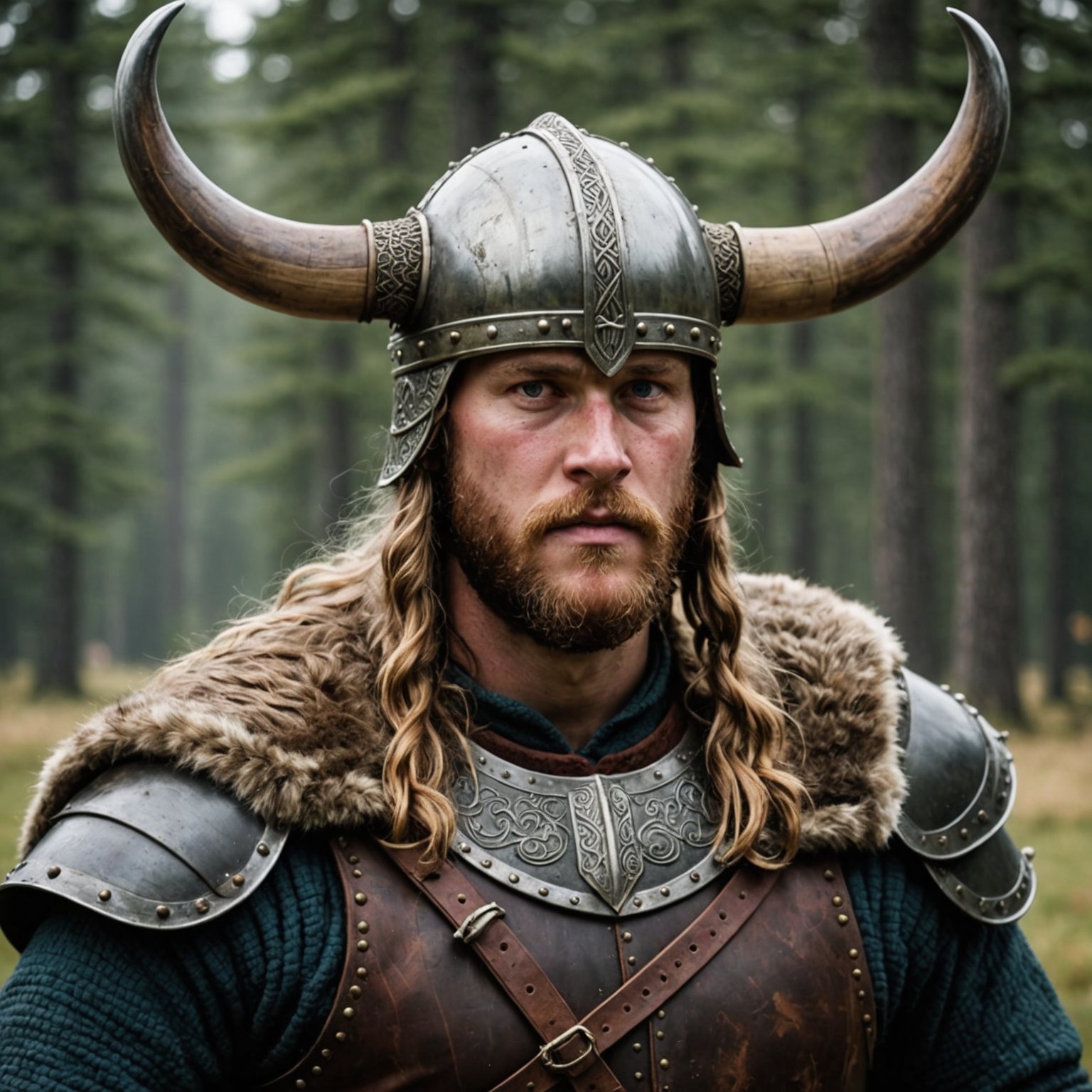Did Vikings really wear horned helmets? (Spoiler: No)
 Real Viking helmets were simple and practical—no horns! The horned helmet is a modern myth.
Real Viking helmets were simple and practical—no horns! The horned helmet is a modern myth.
Busting the Myth: Did Vikings Really Wear Horned Helmets?
The Truth Behind the Horns
By Peter Teoh, Science Writer
Picture a Viking. Chances are, you’re imagining a fierce warrior with a helmet crowned by two massive, curved horns. But here’s the twist: real Vikings almost certainly never wore anything like that. The horned helmet is one of history’s most persistent—and incorrect—stereotypes. So where did this myth come from, and what did actual Viking helmets look like? Let’s dig into the facts—and the fiction.
The Viking Helmet: Fact vs. Fiction
The Hollywood Viking
Movies, comics, and even sports teams love to show Vikings in horned helmets. But archaeologists have searched for over a century, and not a single Viking Age helmet with horns has ever been found[6]. The only nearly complete Viking helmet ever discovered—the Gjermundbu helmet from Norway—is a simple, rounded iron cap with a nose guard and eye protection. No horns, no wings, just practical design for real combat[3][4].
So Where Did the Horns Come From?
The horned helmet myth isn’t ancient—it’s surprisingly modern. The big shift happened in 1876, when a German costume designer added horns to Viking helmets for a famous opera by Richard Wagner. The look caught on, and soon, “Viking” meant “horns”[2][5]. Before that, Vikings were usually shown with wings or nothing extra on their helmets. But after Wagner’s opera, the horned helmet became the global symbol of Vikings, even though it’s totally made up[5].
What About Those Ancient Horned Helmets?
Horned helmets did exist—just not for Vikings. The famous Viksø helmets, found in Denmark, are real. They’re decorated with bull-like horns and intricate designs, and they look amazing. But they’re from the Nordic Bronze Age, about 900 BCE—nearly 2,000 years before the Viking Age[1][2]. These helmets were probably used in rituals, not battle. Similar horned designs appear in ancient art from Spain, Sardinia, and even the Near East, showing a shared cultural idea that traveled across Europe[1].
Why Didn’t Vikings Wear Horned Helmets?
Practical Problems
Imagine trying to fight—or even just walk around—with two big horns sticking out of your helmet. It’s not just awkward; it’s dangerous. In battle, a horned helmet would be a liability, making it easy for enemies to grab or knock you off balance. On a crowded Viking ship, horns would get in everyone’s way. Real Viking helmets were designed for protection, not show[3].
What Did Vikings Actually Wear?
We don’t have many Viking helmets because metal was valuable, and helmets weren’t often buried with the dead[3]. The few pieces found—like brow ridges from Denmark—suggest Vikings wore simple, functional helmets, sometimes with mail (chainmail) to protect the neck and face[3][4]. Some Vikings may have worn leather helmets, but leather rarely survives in the ground, so we can’t be sure[5].
Were There Any Exceptions?
A few ancient carvings and tapestries, like those on the Golden Horns of Gallehus, show figures with horned helmets. These might represent berserkers—legendary warriors who fought in a wild, trance-like state. But even these images are rare, and there’s no proof that ordinary Vikings wore such gear[3].
Why Does the Myth Persist?
Pop Culture Power
The horned helmet is catchy and dramatic—perfect for selling tickets, jerseys, and cereal boxes. It’s become a “brand” for Vikings, even though it’s wrong[5]. Historians roll their eyes every time they have to explain, but the myth is tough to kill[4].
A Global Helmet Story
Horned helmets appear in many cultures, from Bronze Age Europe to modern heavy metal bands. People have always loved dressing up as beasts or gods, using horns to look powerful or scary[4]. The Vikings just got stuck with someone else’s fashion statement.
Closing Thoughts
The next time you see a Viking with horns, remember: real history is often weirder—and cooler—than the myths. Vikings were explorers, traders, and warriors who changed the world. Their real helmets were simple, smart, and built for survival. The horns? That’s a story invented by artists and advertisers, not by history.
Side Notes
- Leather Helmets: Some historians think Vikings might have worn leather helmets, but since leather rots, we have no proof.
- Berserkers: These legendary warriors might have worn special gear for rituals, but there’s no evidence they wore horned helmets in battle.
- Helmet Fragments: Most Viking helmets we find are just pieces, making it hard to know exactly how they looked.
Trending Sidebar
Did You Know?
- Viking helmets are so rare that only one nearly complete example has ever been found—and it’s horn-free![3][4]
- The horned helmet myth started with a 19th-century opera costume, not ancient history.[2][5]
- Horned helmets were real in the Bronze Age—just not for Vikings.[1][2]
- Some video games, like Assassin’s Creed Valhalla, now avoid the horned helmet cliché and aim for historical accuracy.[4]
Leave a comment